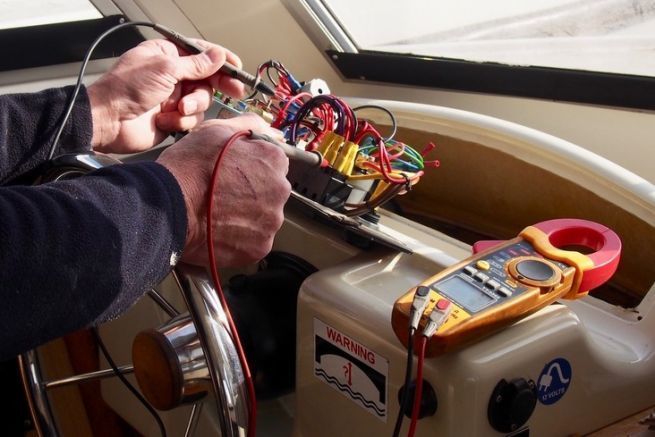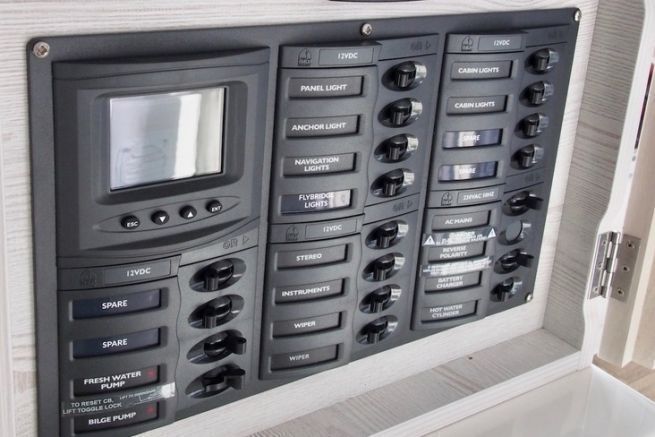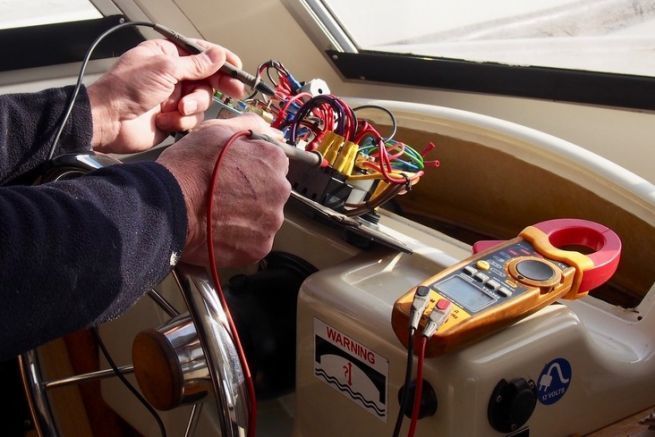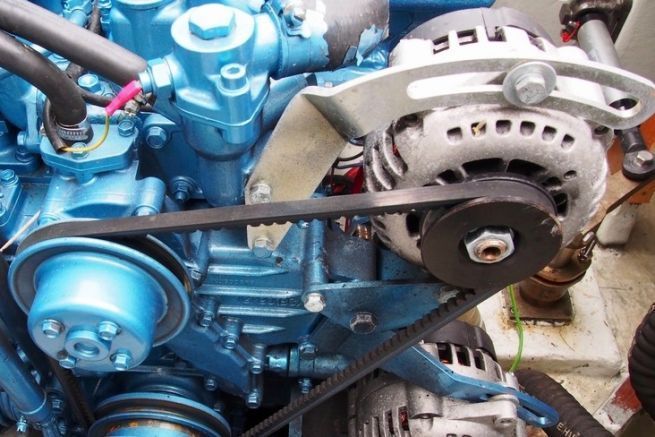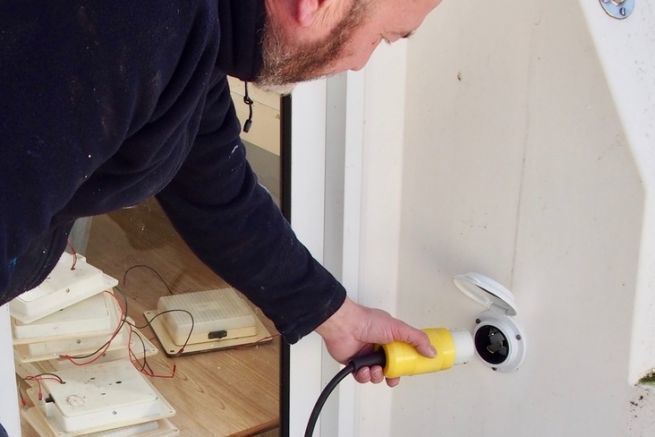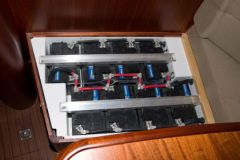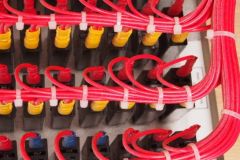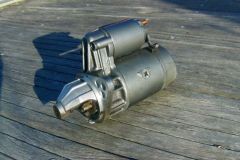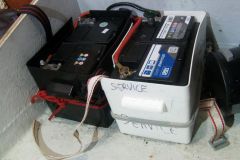The boat's electrical system is made up of not one but several circuits, the most important of which are those that supply the boat with power from the batteries. The current is direct, meaning that it always flows in the same direction, from the positive terminal to the negative terminal. By convention, the positive is marked in red and the negative in black.
Batteries for every purpose
The electric current returned by the battery is generated by the chemical reaction between metallic plates and an electrolyte which surrounds them. The electrolyte can be liquid, gel or imprisoned in a kind of blotting paper. Gel batteries are by far the safest: no risk of leakage, little gas release and no maintenance.
We are also seeing the development of lithium-ion batteries on board boats, which provide a significant weight saving compared to conventional technologies.
Batteries are not all designed for the same purpose: those dedicated to engine starting must deliver a high current for a short period of time, while for domestic or service use, they must withstand deep discharges and undergo many charge cycles without flinching. Using one for the other would quickly damage it.
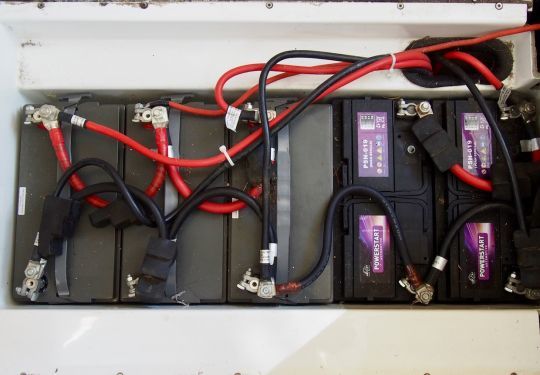
A secure space
The place dedicated to the batteries must be protected by a watertight, ventilated container with a cover. The watertightness allows to avoid the dissemination of acid in case of electrolyte leakage, the ventilation allows to disperse the emanations of gases generated by the charge. The cover prevents a metal object from short-circuiting the 2 battery terminals, with the sparks that one can imagine!
The cables that connect the batteries must be of large diameter to avoid overheating. The required cross-section depends on the amperage and the length of the cable. Each case is different and there is no room for approximation here.
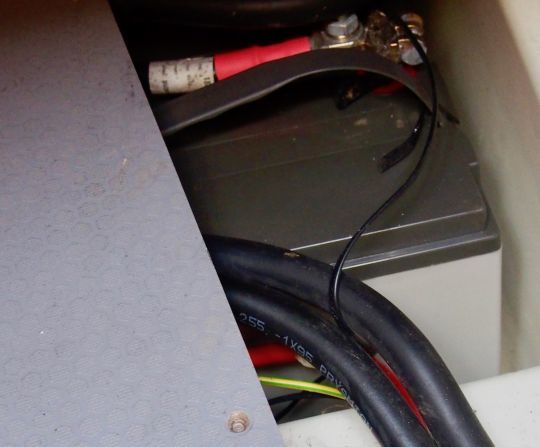
Isolated circuits
Batteries must be able to be isolated from the circuit by means of battery isolators.
There are 2 kinds of them:
- unipolar models. They cut only one of the poles, usually the positive one. They are sufficient in the case of a wooden or polyester boat.
- bipolar models. They allow, by cutting negative and positive, to totally isolate the battery. They are essential in the case of a metallic shell.
Finally, there are models known as couplers that allow you to use, for example, the energy available in the domestic batteries to help start the engine.
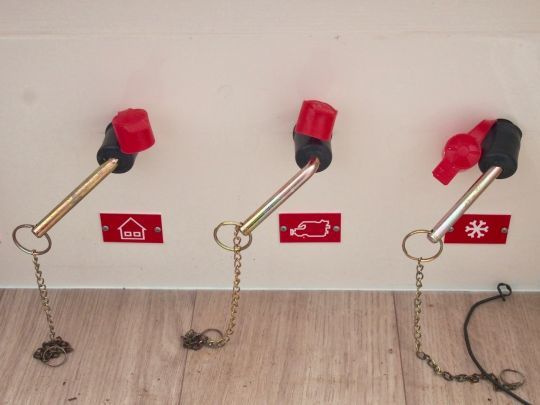
Quality connections
To prevent corrosion, the battery terminals should be coated with grease before being connected to the circuit by screwed terminals. The contact must be perfectly tight, not only to limit losses, but also to avoid any risk of overheating. This is a constant for the entire circuit: the more clean and rust-free the contact, the better the operation and safety of the system. The cable lugs should ideally be soldered, or at least crimped with a professional tool.
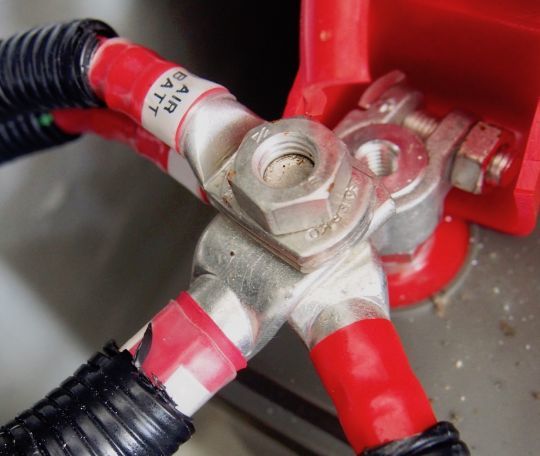
A protection panel
Downstream of the battery switch, the wiring is connected to the electrical panel that will distribute power to each device.
This panel includes as many protections as there are devices to be powered. They can be fuses, but more and more often, they are thermal circuit breakers that "blow" to protect the circuit in case of anomaly. This is a clear sign of a malfunction; only reset it after checking the corresponding circuit. A bad contact is often the cause, especially since the copper of the conductors oxidizes quickly in a saline atmosphere. This increases the resistance of the wire (the current flows less well). To prevent this, any stripped part must be tinned before being connected.

Independent parks
To prevent one consumer from taking precedence over the others, the batteries are separated into several "banks": one for the engine, to which the bilge pump is generally connected, and one for domestic or service uses: pumps and lighting. A third bank is sometimes necessary for large consumers such as a bow thruster or a large refrigerator. Thus, the over-consumption of one device will not affect the whole boat.
As far as possible, it is better to avoid converters that distribute 220 V from 12 V. For the recharge of digital devices, we prefer USB plugs rather than the electrical heresy that consists in converting 12 V into 220 V, to plug in a charger that converts it back into 5 V...
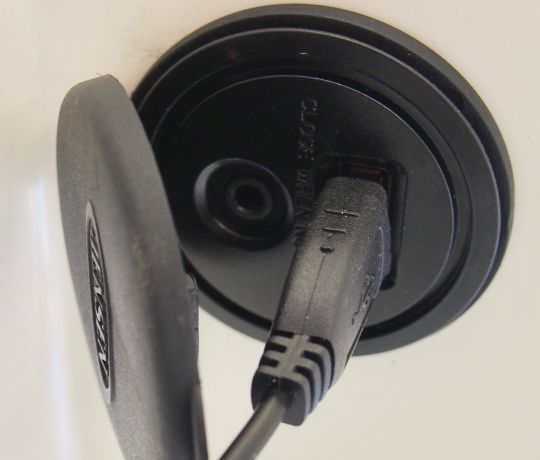
If you have to work on the circuit, it is imperative to disconnect the battery! Few people do this, but a tool can cause a short circuit and fry an electronic device. Above all, be wary of tinkering, temporary repairs or additions based on flying wires and dominoes. These are the ones that, in the long run, become the main causes of trouble. If in doubt, call in a professional.

 /
/ 